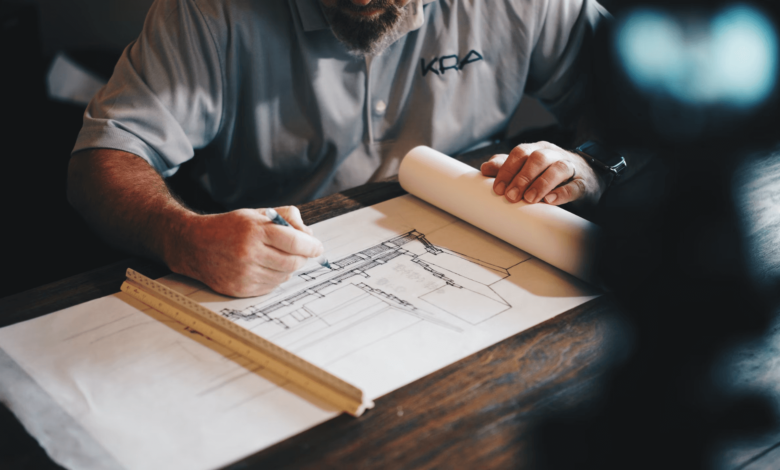The Role of BIM Management in Construction and Design

BIM Management utilizes specialized software programs to develop and oversee Building Information Models, which allow them to identify issues/clashes/problems during construction that might otherwise be difficult or impossible to detect and resolve. By doing this, these models can identify any possible potential conflicts/issues and proceed with solving and saving a great deal of money on projects.
Optimizing Your Project Workflow with BIM Management
Clear communication in construction is vital to successfully delivering projects on time and within budget. BIM facilitates this collaboration by serving as a single source of truth for a project’s 3D model; its 3D representation makes it easier to convey design intent as well as detect any potential conflicts before construction begins, helping project teams stay on schedule while also preventing any costly delays due to poor design alignment or unexpected issues that could arise during physical building activities.
BIM also makes it possible to track the progress of each subcontractor and coordinate their efforts with those of other team members, making sure that every aspect of a project is completed on time and to the desired quality – helping eliminate costly rework operations that add time and costs to projects.
Rework is a key issue in construction, accounting for up to 5% of project costs and 30% of construction time. BIM allows contractors to easily identify mistakes such as electrical and plumbing lines overlapping before they occur on site, thus saving both money and manpower while decreasing rework costs.
BIM can streamline various other construction and design processes, making them more efficient and effective. Therefore, organizations seeking to increase production efficiency and decrease waste should seriously consider BIM management as part of any strategy to enhance workflow efficiency and effectiveness. It’s important to consider any new development to decrease waste as current social structure dictates.
Transforming 2D drawings into 3D models and simulations is a crucial method for construction firms to elevate their work. This process aids in early clash detection, cost reduction in rework, adherence to schedules, and maintaining compliance. However, integrating this technology into projects presents several challenges. Effective BIM management is crucial for overcoming these challenges and making the most of this new technology.
Building information modeling requires four main steps that must be completed: identifying appropriate BIM uses, designing the process mapping procedure, defining deliverables, and determining infrastructure needs – each with detailed examples included within this guide along with templates to aid their completion.
As part of the planning phase, clear goals must be established regarding how BIM will be implemented on a project. This helps all team members understand what its benefits are and how they will help realize them; this is particularly pertinent when dealing with primary project stakeholders such as owners, designers, architects, engineers, major specialty contractors or facility management.
Once goals have been set, a planning team should be assembled to draft a BIM Plan, which you can learn about here. This team should include representatives from each primary project team in order to ensure everyone works cohesively to successfully implement BIM.
An integral component of this process is developing a schedule of work. Doing so provides an accurate timeline for when each task should be completed, while simultaneously informing all parties what their respective responsibilities are – helping ensure a more streamlined delivery and reduced frustration on all fronts.
Read also Ace the Game: Unveiling the Best Online Blackjack Platforms in Australia
BIM models contain information that can be leveraged at every phase of a project’s life cycle, from pre-construction through renovations, maintenance, and repairs post-completion. Their data can also help increase efficiency on construction sites by offering an accurate snapshot of a particular job site.

Elevate Your Projects with Expert BIM Management Services
BIM management refers to using platforms and tools to coordinate construction team members more efficiently, helping reduce errors, rework, and ensure everyone is on the same page. BIM also reduces the time it takes for information to be exchanged among parties involved with projects, providing more accurate images of how buildings will function over time.
It also helps construction team members collaborate and communicate work schedules more efficiently, particularly when multiple contractors are working on one project. By using a 3D model, all parties involved in production can see timelines for each phase and remain on schedule to complete it according to plan; this results in reduced change orders and a faster delivery timeframe.
Once a building is constructed, it can assist with operation and maintenance by providing information-rich models and asset data that support operations, maintenance, refurbishment, and extension and demolition activities. This could include anything from providing a simple graphical representation of the model to fully automated facility inventory analysis.
BIM can create an interactive 3D model of an entire project that can be shared among all stakeholders, which can then be used for validating monthly requisitions, providing scheduling updates, and creating bills of materials – as well as aiding with change order approval by providing details about its need and impact on the project. Such collaboration and communication are a huge advance for industry that will not only increase efficiency, safety, and quality but reduce costs and risks while fostering improved decision-making by both client and contractor when the time comes to it.
With increasing facility demands, construction companies must constantly find ways to increase efficiency and quality across the board. This type of management plays an integral part in this effort – with proper internal processes implemented, projects can be planned more accurately, quickly, and cost-effectively than before, reducing errors and rework substantially.
BIM can also be used to create fabrication-level 3D models that are then utilized by computer-aided manufacturing (https://www.uwa.edu.au/study/courses/master-of-building-information-modelling) machines for fabrication purposes. This ensures the part or component is created according to architect designs while helping construction professionals avoid costly errors like improper sizing and positioning of materials used during fabrication – especially important when fabricating modular and prefabrication projects requiring controlled environments for fabrication.
BIM can also help facilitate internal coordination within a project by creating a reference frame for system placement, helping project teams visualize where systems are relative to one another, and serving as an instructional manual for workers on-site. Its use during prefabrication helps reduce wasteful construction waste by decreasing demolition and material inventory costs in both pre-and post-situations.




